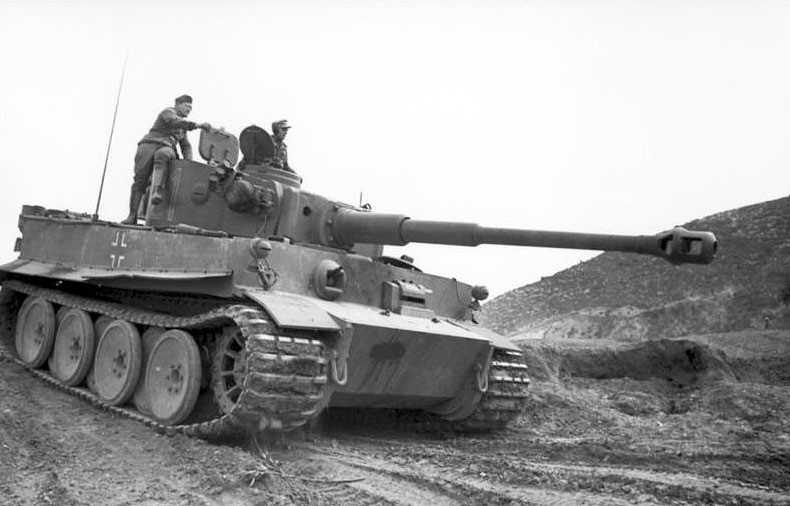
| Year | August 1942 |
| Vehicle Type | Heavy Tank |
| Origin & Designer | Germany/Henschel & Wegmann |
| Numbers Produced | 1.346 |
| Crew | 5 (Commander, Gunner, Loader, Radio Operator & Driver) |
| Main Armament | 1 x 88mm L/56 KwK 36 Gun |
| Main Armament | [@sponson_traverse] |
| Elevation | -6.5° to +°17 |
| Turret Traverse | 360° (Powered) |
| Gun Traverse | [@gun_traverse] |
| Gun Mount | [@gun_mounts] |
| Maximum Range | [@maximum_range] |
| Armour Penetration | [@armour_penetration] |
| Gun Sight | TZF9c |
| Secondary Armament | 2 x 7.92mm MG34s |
| Smoke Discharger | 92mm Smoke Dischargers (Early models) Nahverteidigungswaffe (Late Models) |
| Ammunition Carried | 92 x 88mm & 4.800 x 7.92mm + Smoke Rounds |
| Height | 2.93m |
| Width | 3.70m |
| Length | 8.45m |
| Combat Weight | 57.000 kg |
| Ground Clearance | 0.47m |
| Fording Depth | 1.56m |
| Trench Crossing | 2.49m |
| Obstacle Clearance | 0.79m |
| Climbing Ability | 35° |
| Radio | FuG-2 |
| Armour | Hull Front: 100mm Hull Sides: 80mm Hull Rear: 80mm Hull Top: 25mm Hull Bottom: 25mm Gun Mantle: 120mm Turret Front: 100mm Turret Sides: 80mm Turret Rear: 80mm Turret Top: 25mm |
| Engine | Maybach HL 210 P45 |
| Transmission | 8 Forward & 4 Reverse |
| Maximum Road Range | 125 km |
| Maximum Cross Country Range | 80 km |
| Maximum Water Range | [@maximum_water_range] |
| Maximum Road Speed | 36 kph |
| Maximum Cross Country Speed | 16 mph |
| Maximum Water Speed | [@maximum_water_speed] |
| Variants | [@variants] |
| Notes | Panzer Mk VI Ausf E (otherwise known as the Tiger I) was one of the most famous tanks used in World War Two, to the allies every German tank was a “Tiger” which is surprising given the fact that only 13.54 were ever built with production starting in July 1942 and ending in August 1944. The Tiger I had overlapping and interleaved road wheels and torsion bar suspension and this arrangement along with wide tracks help to distribute the weight of the tank. The main armament was an 88mm KwK 36 gun and two MG34s. The Tiger Is first saw action in late summer 1942 on the Russian front. They were issued to independent heavy tank battalions with both Wehrmacht and SS formations. Tigers went on to see service in North Africa, Sicily, Italy and France, with the remaining vehicles helping to defend Germany in 1945. |